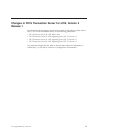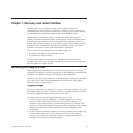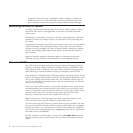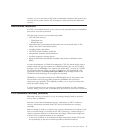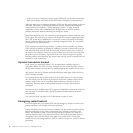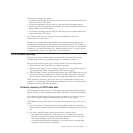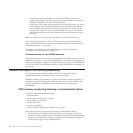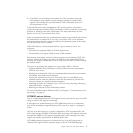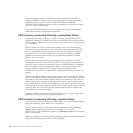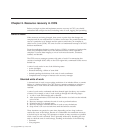v In the event of an emergency restart, when CICS backs out all those transactions
that were in-flight at the time of the CICS failure (emergency restart backout).
Although these occur in different situations, CICS uses the same backout process in
each case. CICS does not distinguish between dynamic backout and emergency
restart backout. See Chapter 6, “CICS emergency restart,” on page 61 for an
explanation of how CICS reattaches failed in-flight units of work in order to
perform transaction backout following an emergency restart.
Each CICS region has only one system log, which cannot be shared with any other
CICS region. The system log is written to a unique MVS system logger log stream.
The CICS system log is intended for use only for recovery purposes, for example
during dynamic transaction backout, or during emergency restart. It is not meant
to be used for any other purpose.
CICS supports two physical log streams - a primary and a secondary log stream.
CICS uses the secondary log stream for storing log records of failed units of work,
and also some long running tasks that have not caused any data to be written to
the log for two complete activity key points. Failed units of work are moved from
the primary to the secondary log stream at the next activity keypoint. Logically,
both the primary and secondary log stream form one log, and as a general rule are
referred to as the system log.
Dynamic transaction backout
In the event of a transaction failure, or if an application explicitly requests a
syncpoint rollback, the CICS recovery manager uses the system log data to drive
the resource managers to back out any updates made by the current unit of work.
This process, known as dynamic transaction backout, takes place while the rest of
CICS continues normally.
For example, when any updates made to a recoverable data set are to be backed
out, file control uses the system log records to reverse the updates. When all the
updates made in the unit of work have been backed out, the unit of work is
completed. The locks held on the updated records are freed if the backout is
successful.
For data sets open in RLS mode, CICS requests VSAM RLS to release the locks; for
data sets open in non-RLS mode, the CICS enqueue domain releases the locks
automatically.
See “Units of work” on page 13 for a description of units of work.
Emergency restart backout
If a CICS region fails, you restart CICS with an emergency restart to back out any
transactions that were in-flight at the time of failure.
During emergency restart, the recovery manager uses the system log data to drive
backout processing for any units of work that were in-flight at the time of the
failure. The backout of units of work during emergency restart is the same as a
dynamic backout; there is no distinction between the backout that takes place at
emergency restart and that which takes place at any other time. At this point,
while recovery processing continues, CICS is ready to accept new work for normal
processing.
6 CICS TS for z/OS 4.1: Recovery and Restart Guide




